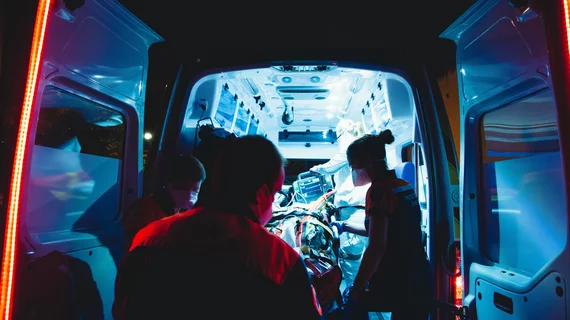White patients undergo higher rates of diagnostic imaging in the ED than their black counterparts
White patients undergo higher levels of diagnostic testing in the emergency department than their black counterparts, according to new research published in JAMA Network Open [1].
Previous studies have demonstrated that imaging overuse is pervasive in the ED, with “defensive medicine” a common reason. Researchers sought to better understand how this plays out along racial and ethnic lines, conducting a cross-sectional study of nearly 3.7 million patient encounters. They focused on causes that can commonly lead to over testing, including nausea or vomiting, abdominal or chest pain, and syncope.
Black patients had lower odds of receiving related testing, with this patient population possibly at increased risk of physicians overlooking key clinical concerns. Future research should attempt to “better understand the cause of diagnostic racial and ethnic disparities and evaluate whether they are associated with missed diagnoses.”
“This black-white disparity is consistent with prior work,” Michael I. Ellenbogen, MD, with Johns Hopkins School of Medicine in Baltimore, and co-authors noted. “Research on diagnostic imaging rates using the National Hospital Ambulatory Medical Care Survey between 2005 and 2016 found that black patients were 16% less likely to receive any imaging in the ED. A systematic review of the association between race and ED imaging found that black patients presenting to the ED with abdominal pain or trauma were generally less likely to receive diagnostic imaging,” they added.
For the study, researchers analyzed discharges, observation stays and admissions using claims among EDs and acute care hospitals in Kentucky, Maryland, North Carolina and New Jersey spanning 2016-2018. Across 3,683,055 encounters covered, about 81% were for patients discharged from the ED. Black patients were hospitalized at a lower rate (18%) than white patients (21%), the authors noted. The lowest rate of testing was 15% for patients in the ED with nausea and vomiting, while the highest was for inpatients with abdominal pain (78%). Overall rates of testing were 32% for ED discharges, 63% for observation stays and 66% for inpatient hospitalizations.
Black patients—compared with white patients discharged from the ED with a diagnosis of interest—faced an adjusted odds ratio of 0.74 of having related testing. Controlling for Medicaid coverage, black patients in the ED were still significantly less likely to undergo testing (0.72), and similar trends were observed in analyses of age and self-pay or unhoused status.
“In addition to including a large number of hospitals and a range of discharge diagnoses, our analysis builds on previous work in another important way: looking at imaging paired with nonspecific principal discharge diagnoses rather than overall rates of imaging or rates of imaging for a specific chief complaint allowed us to infer rates of nondiagnostic testing,” the authors noted. “Prior work suggests that a low yield of useful information from diagnostic imaging may be a proxy for test overuse. White patients discharged from the ED had higher rates of testing paired with nonspecific principal diagnoses than black patients and thus higher rates of nondiagnostic testing for conditions of interest. This suggests that white patients may receive more test overuse but also raises the concern that undertesting among black patients may lead to more missed diagnoses. To our knowledge, racial and ethnic differences in the information yield of diagnostic testing have not been previously studied.”
Read more about the results, including potential study limitations, at the link below.

